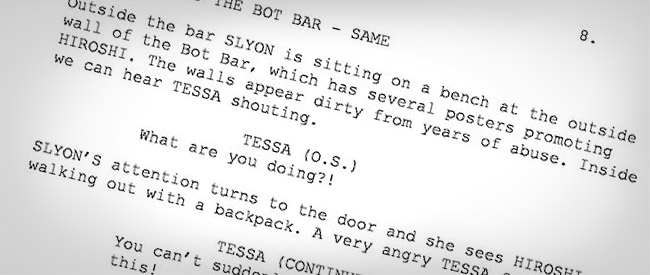Selling the Drama: Essential Pitch Skills Every Filmmaker Should Know By Heart
The situation: you step into an office, elevator or boardroom. Across from you are the stone-faced individuals (producers, financiers, whatever) with the power to make your TV or movie idea a reality. They’re waiting for you to wow them, to convince them to say “yes” when 99% of their job is to simply say “no”. Guess what? It’s time to pitch your ass off.
Pitching is a critical skill for any independent filmmaker to develop—and arguably the critical skill. Sure, having good material is important. But unless you can sell yourself in the room (or elevator, or bathroom stall) your chances of actually getting that passion project off the ground are all but DOA.
But learning to pitch doesn’t have to be quite so intimidating. That’s where Charles Howard comes in. Howard is an Executive Producer and Account Director at Inhance Digital and member of the Producers Guild of America Diversity Committee. Howard is also a pitching consultant who’s honed his skills through years of practical experience and professional observation in the worlds of TV, film and game development.
Howard shared some of his perspective on the art of pitching during Film Independent’s June 21 Pitch Me, Quick! event, held in front of a packed audience at Film Independent’s Los Angeles offices. Armed with an info-dense Powerpoint, Howard outlined the “do’s and don’ts” of pitching. Here’s some of what we learned:

Howard describes pitching as “the art of presenting your story in a compact and intriguing manner”—and no unit of the pitch is designed to be more compact or intriguing than the logline. Simply put, the logline is a 1-2 sentence description of your story boiled down to its most essential base elements. Or, as Howard described it: “the most abbreviated telling of the major storyline.”
Typically, these base elements include the following: protagonist, goal, obstacle, set-up, stakes and risk factor. The goal of a logline is to establish the action, struggle and desires of your lead character. “Draw dramatic questions,” Howard said. “Write it in a way that intrigues your listener.”
Howard then went on to provide sample loglines, good and bad, of several recognizable film titles—including Inside Man, Breaking Bad, Casablanca and Rocky, among others. The crowd critiqued each one. Howard then challenged members of the audience to write their own logline… to The Wizard of Oz.
“[This is] an exercise in training you how to think about loglines,” said Howard as the group shared their attempts at concisely and intriguingly summarizing the 1938 Hollywood classic. After the exercise he said, “What you heard here is: your choice of words gives a very different impression.”
In general, loglines should focus on descriptive action. Passive descriptions should be eschewed. Character names are optional. To further illustrate, Howard provided an example of a (good) Casablanca logline, then diagramed its essential components: protagonist, goal, obstacle, set-up, stakes and risk factor.
In simple terms, the logline is the smallest unit of information you have available to you to tell your complete story. And since you don’t always know how much time you’ll have with any given producer, Howard recommends prepping several different versions of your pitch at varying intervals of length—the logline being the shortest. “Be ready to adapt,” he said.

Wrapping up, Howard recalled an experience pitching a project at Sundance. Each time he pitched the idea, Howard would make a mental note of the exact moment when his audience’s attention began to wander. He’d then refine that section and repeated the process on someone else, advancing further into the pitch each time he delivered it until there was no moment of distraction at all.
“It’s a journey,” said Howard of the pitching process—a journey that can be refined through repetition and experience. “If you exude confidence, belief and passion for your story that will translate [to your audience],” said Howard.
Howard finished the evening by recapping some pitching best practices: know your story backwards and forward; have your pitch memorized, never read it; read the room and be prepared to adjust and improvise; be concise, as to allow for questions (regardless of how much time you have); be confident; be positive. And remember—you never get a second chance to make a good first impression.
Ultimately, the objective of any pitch is an odd sort of alchemy: you want to turn a one-sided monologue about theoretical story idea into a two-way dialogue about potential collaboration. How’s that for a logline?
For more information about upcoming Film Independent events, click here. To learn more about our Film Education programs, click here. Learn how to become a Member of Film Independent by visiting our website, and don’t forget to subscribe to our YouTube channel!
(header: Filmmakers pitch their projects at Fast Track 2016 at the LA Film Festival)